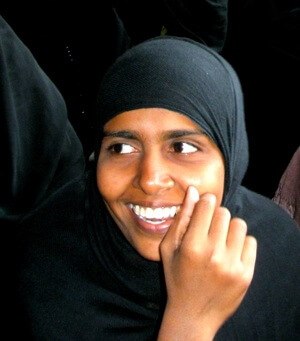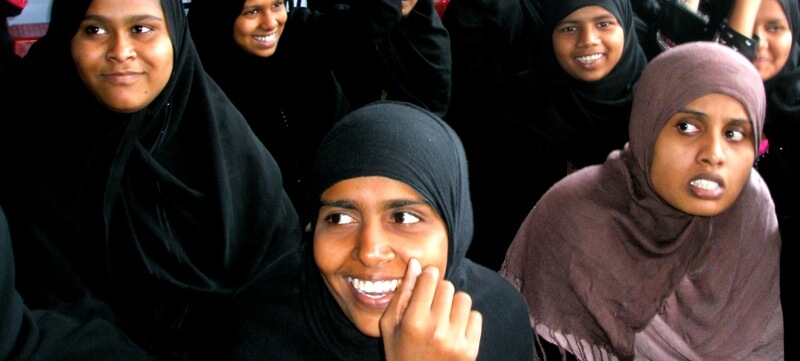 "We want to keep going to school
"We want to keep going to school
Educational programs for young women in India
“When I was ten or eleven years old my mother said, "from next week on, we need your help in the household”, tells Vaishili from Kurnool. It was a shock for her. It meant she was not allowed to go to school anymore and meet her friends. Fortunately, Mrs. Faizunnisa from the SFTTC project could convince Vaishili’s parents of the importance of education. This is why she now attends the girls’ school of SFTTC, the S.F. Tailoring Training Centre where she is also graduating. She is especially pride of her job as a skilled Henna painter. She has already been able to prove her skills at a traditional wedding where she was paid 1000 rupees for her Henna painting, ten times more than the average salary. When asked who wants to keep going to school all girls rise their hands, even the attending mothers.
Necessity
Education for Muslim girls in India.
Activity
Girls are being educated in the SFTTC Center and receive a degree as well as a vocational training as basket maker, tailor or Henna painter.
Countable effort
Number of young women who learned to read, write, and count, and additionally finished a vocational training.
Result
Number of young women who are able to generate their own income.
Systemic effect
Graduates and mothers build a network so that additional girls including sisters, cousins and neighbors may profit from the positive experiences of the training. Amount of young girls taken out of school decreases. Amount of early marriages decreases.
Background
After the Indian subcontinent was divided into two independent states in 1947, the majority of the Muslim population emigrated from India to Pakistan. The Muslims who stayed were largely unable to afford the long journey to Pakistan. They were too poor. The 160 million Muslims represent 13.4 percent of the Indian population today, and thus, constitute the biggest religious minority in Hindu India. In the Kurnool district, in the federal state of Andhra Pradesh, the majority of residents were Muslims before the division. After the foundation of Pakistan, they became a minority and today they live mostly in slums, marginalized by society. In a socio-economic view Muslims in India constitute the bottom of society. Also their illiteracy rate lies below the national average. One quarter of Muslim children between the age of six and fourteen have either never attended a school or quit early (Sachar Committee Report, 2006). The girls especially suffer from the poverty. Generally, they are valued least in Indian society. Because they joined the family of the husband after marriage, the parents see no necessity to invest in the education of their daughters. In the Muslim communities, girls, if they attend school at all, are taken out of school when they reach puberty. They are married early in order to relieve their families of financial hardships. Inexperienced and early-married girls face particular difficulties. They often are treated badly and exploited by their husband and his family.
The good deed
Many Muslim families see no necessity in educating their daughters or are simply not able to finance it. The girls’ school in the SFTTC Center is for free. All materials are provided without any costs for the girls. With the Good Deed of today, a schoolgirl receives free material for one month, which she needs for her vocational training in order to become a tailor, basket maker or Henna painter. This includes schoolbooks but also clothes, colors, yarn and much more. Everything the girls produce in the context of their vocational training at the SFTTC Center, they are allowed to sell. This way, they learn how to organize their tasks and at the same time earn a little income. The later, is an important argument in order to convince the parents that attendance at the school is beneficial.
Challenge
The education of girls is often not valued. They are taken out of school when reaching puberty and married early to not be a burden for their family. The huge challenge of the school is to convince the families of the necessity of education and the financial benefits of a vocational training.

AboutIndia
New Delhi
Capital
1.260.260.000
Number of inhabitants
1,492 USD
Gross domestic product per capita per year
133
Human Development Index
India is the country with the second largest Muslim population worldwide (160 – 180 million; estimation bpb 2014)
About the organization and further information
Association
Camino Seguro e.V. (Safe Passage)
DZI-Spendensiegel, Initiative Transparente Zivilgesellschaft




